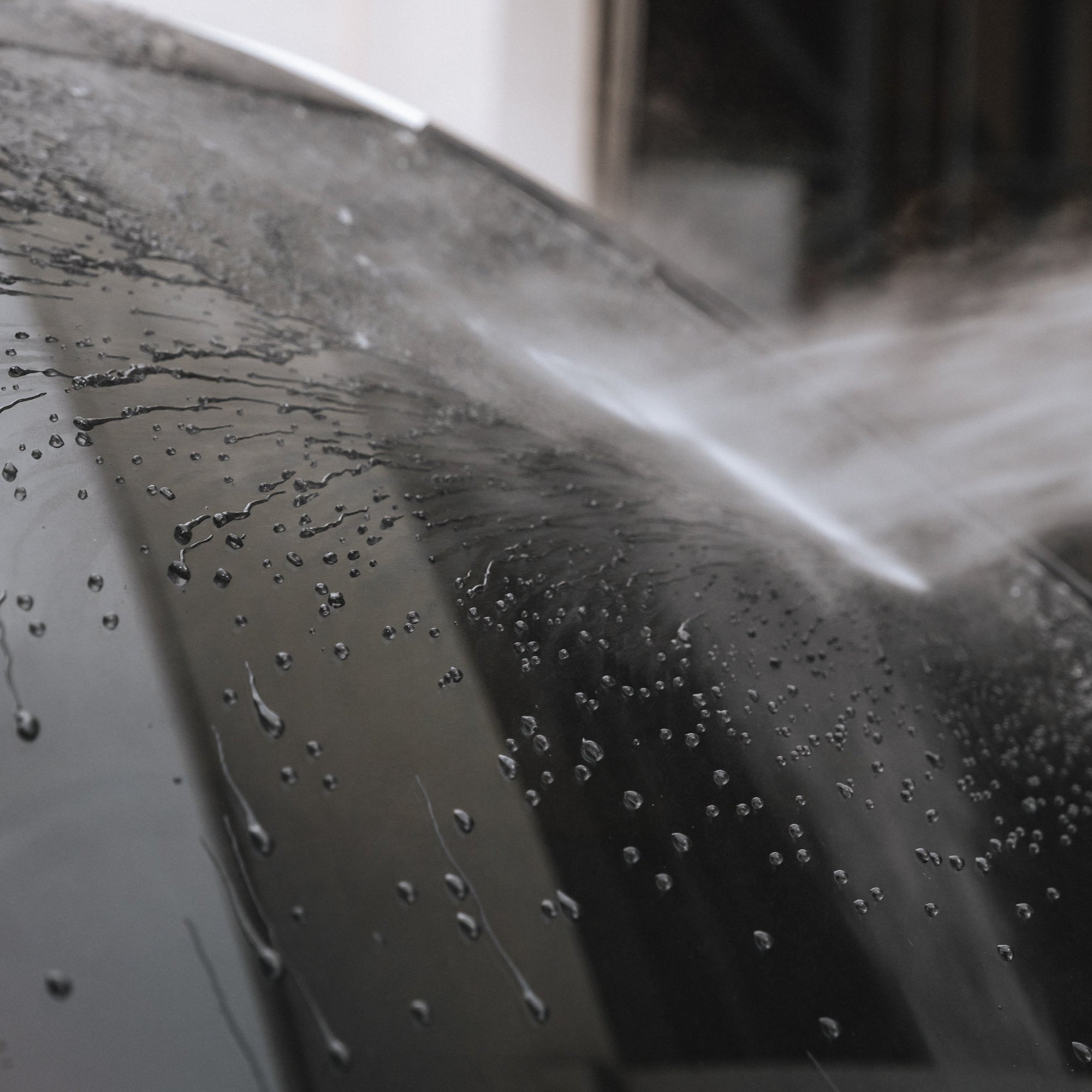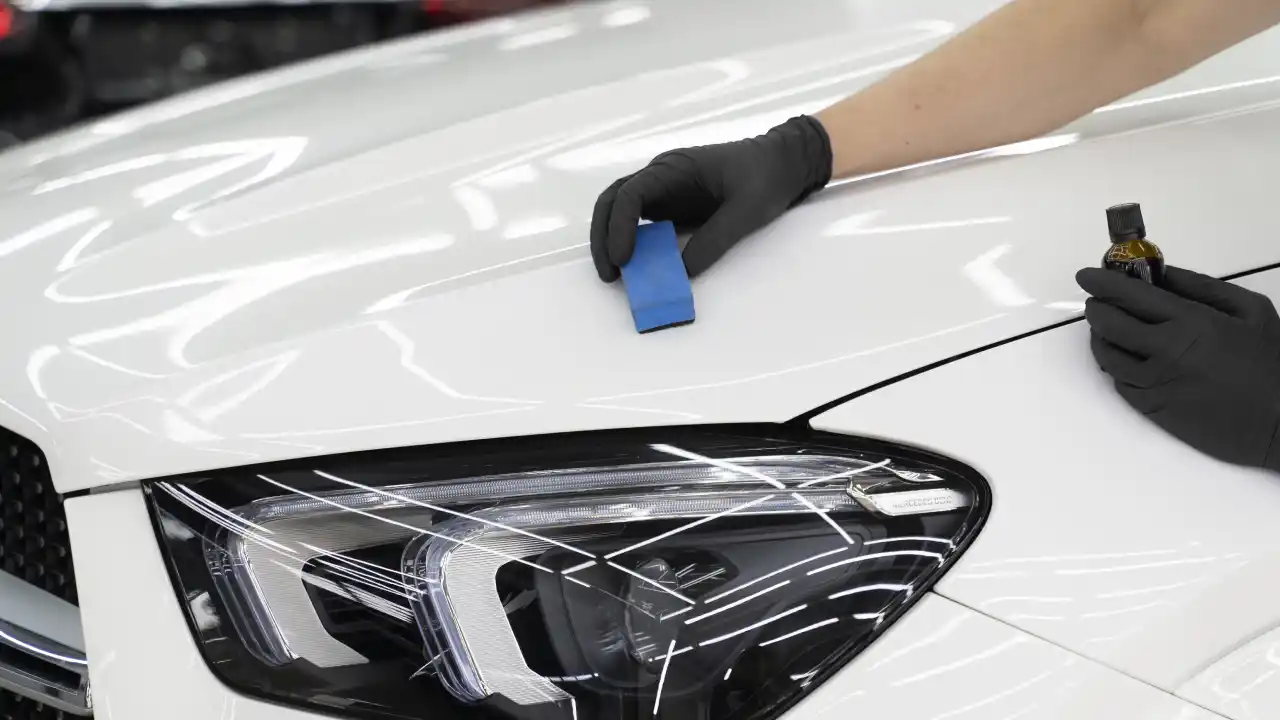Specialist Tips for Keeping Your Lorry After Using Ceramic Coating
Specialist Tips for Keeping Your Lorry After Using Ceramic Coating
Blog Article
Understanding the Science Behind Ceramic Coating for Boosted Lorry Sturdiness
The scientific research of ceramic coating is changing automobile upkeep by giving an awesome shield against extreme environmental variables. As we check out the intricate composition and application process of ceramic coverings, we reveal the keys behind their superior protection and long life (ceramic coating). Just how does this compare to standard methods, and what implications does it have for automobile maintenance in the lengthy term?

Composition of Ceramic Coatings
Ceramic coatings are mostly composed of silicon dioxide (SiO2), which is obtained from all-natural materials like quartz and sand. This compound forms the backbone of the finishing, supplying its characteristic firmness and resistance to ecological elements. In enhancement to SiO2, ceramic coatings commonly include titanium dioxide (TiO2) for enhanced UV security and raised resistance to toxic wastes. These nanocomposite products develop a robust, chemical bond with the car's surface area, supplying an enduring protective layer.
The formula of ceramic finishes is a thorough procedure where the concentration of SiO2 can considerably influence the finish's efficiency. Greater SiO2 content usually leads to better durability and firmness, adding to the layer's capacity to resist scratches and chemical etching. The balance of components is crucial; also much SiO2 can make the layer weak, while as well little can jeopardize its protective properties.
Suppliers might likewise integrate added materials, such as polysilazane, to enhance flexibility and convenience of application. These ingredients enhance the coating's hydrophobic properties, making certain water and impurities bead off the surface easily. This engineered composition emphasizes the effectiveness of ceramic coverings in guarding an automobile's exterior versus a range of adverse problems.
Application Process Described
Applying a ceramic covering to a car entails a number of critical steps, each necessary to guaranteeing optimum bond and efficiency of the protective layer - ceramic coating. The procedure begins with a detailed laundry and purification of the car's surface area to remove dust, crud, and previous waxes or sealants. This action is essential as any pollutants left externally can hinder the layer's ability to bond successfully
Following the preliminary cleansing, the following step includes brightening the vehicle to get rid of any kind of imperfections, such as swirl marks or scratches. Sprucing up makes certain a smooth surface, which is crucial for the layer to adhere correctly and give an uniform finish. After polishing, a surface area prep work spray is utilized to eliminate any type of continuing to be deposits and ensure that the surface is completely tidy.

Safety Benefits
Commonly hailed for its remarkable safety qualities, a ceramic finishing offers countless benefits that substantially boost car toughness. At its core, ceramic covering develops a hard, semi-permanent obstacle over a lorry's exterior, which acts as a shield against different ecological hazards.
Furthermore, ceramic finishes show hydrophobic residential properties, meaning they fend off water and assist in a self-cleaning effect. This characteristic minimizes the adherence of dust and mud, simplifying maintenance and cleaning processes. The finish's resistance to chemical etching further makes sure that the vehicle's surface remains unblemished in spite of direct exposure to extreme cleaner and pollutants.
Along with these safety benefits, the ceramic finish improves a vehicle's visual appeal by producing a glossy surface that emphasizes shade depth and clarity. This not only sustains the car's visual charm yet likewise adds to its long-term value by maintaining the honesty of its outside with time.
Contrasting to Typical Approaches
Unlike standard techniques of car protection, such as waxing or sealers, Extra resources ceramic coatings offer an even more durable and long lasting remedy. Where waxes and sealers typically provide a temporary check layer of protection, commonly needing reapplication every couple of months, ceramic layers create a semi-permanent bond with the automobile's paint. This bond produces a protective layer that is resistant to environmental pollutants, UV damage, and minor abrasions.
Traditional waxes are primarily made up of natural parts like carnauba wax, giving a shiny surface however lacking the robust safety top qualities of ceramic finishes. Sealants, while synthetic and offering a little much better longevity than waxes, still drop short in contrast to the strength and chemical resistance of ceramic finishes. The sophisticated technology of ceramic coverings incorporates nanotechnology, which allows them to complete microscopic imperfections in the paint surface area, causing a smoother and extra hydrophobic surface.
In terms of application, ceramic coverings call for a more thorough procedure, typically necessitating professional installation to ensure optimum efficiency. This contrasts with the relatively simple application of waxes and sealers, which can be used at home. Nonetheless, the remarkable defense and aesthetic enhancement given by ceramic finishings warrant the financial investment for those seeking long-term automobile conservation.
Long Life and Upkeep
Just how does the durability of ceramic finishings translate right into convenience of maintenance for vehicle proprietors? The sophisticated formula of ceramic coatings gives a durable protective layer on the vehicle's surface area, which substantially prolongs the lifespan of the car's outside coating.
Additionally, the hydrophobic nature of ceramic finishes makes it possible for water and various other fluids to bead up and roll off the surface, bring dirt and particles with them. This residential or commercial property minimizes the buildup of pollutants, making regular cleaning a lot more efficient and much less labor-intensive. Owners gain from a constantly sleek, glossy look with marginal initiative. Nevertheless, while the finishing itself is lasting, it is not completely maintenance-free. Routine inspections for damage and periodic reapplication are advised to make sure the protective layer stays undamaged. Hence, ceramic finishes give a useful equilibrium in between long-term resilience and streamlined maintenance for automobile treatment.
Final Thought
Ceramic layers, with their innovative chemical make-up of silicon dioxide and titanium dioxide, give an awesome obstacle versus environmental damage, considerably enhancing vehicle resilience. The hydrophobic residential properties promote self-cleaning, decreasing maintenance initiatives and maintaining visual allure. When my blog contrasted to traditional approaches, ceramic coatings offer exceptional protection versus UV rays, oxidation, and chemical etching. This technology prolongs the life-span of automobile exteriors, making it an ingenious service for long-term conservation and very little upkeep.
The formula of ceramic coverings is a precise procedure where the concentration of SiO2 can considerably influence the layer's performance.Applying a ceramic finish to a lorry entails a number of critical steps, each vital to ensuring optimal adhesion and performance of the safety layer.Often hailed for its phenomenal protective high qualities, a ceramic covering provides numerous advantages that considerably boost car longevity. The sophisticated formula of ceramic layers offers a robust safety layer on the car's surface, which substantially extends the life-span of the auto's outside surface.Ceramic layers, with their innovative chemical composition of silicon dioxide and titanium dioxide, offer a formidable obstacle against ecological damage, dramatically improving car longevity.
Report this page